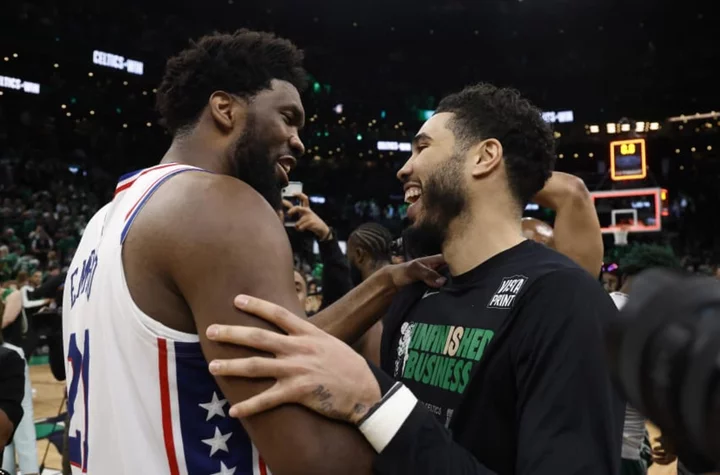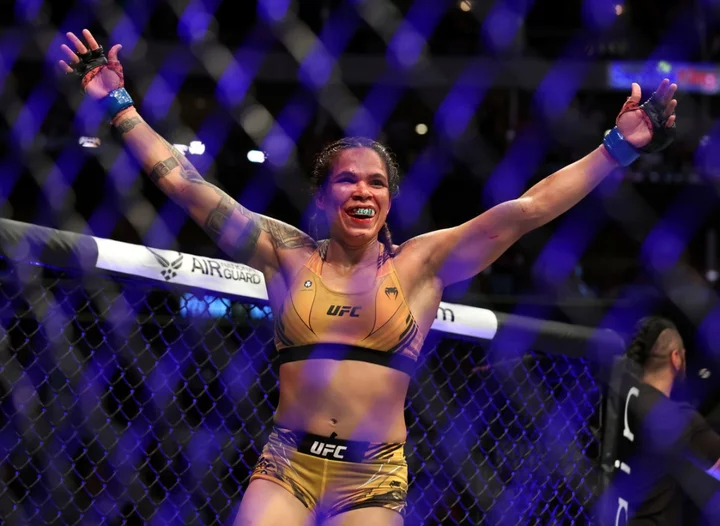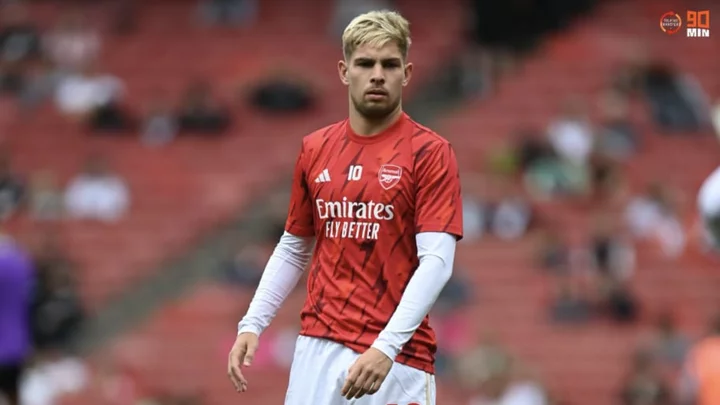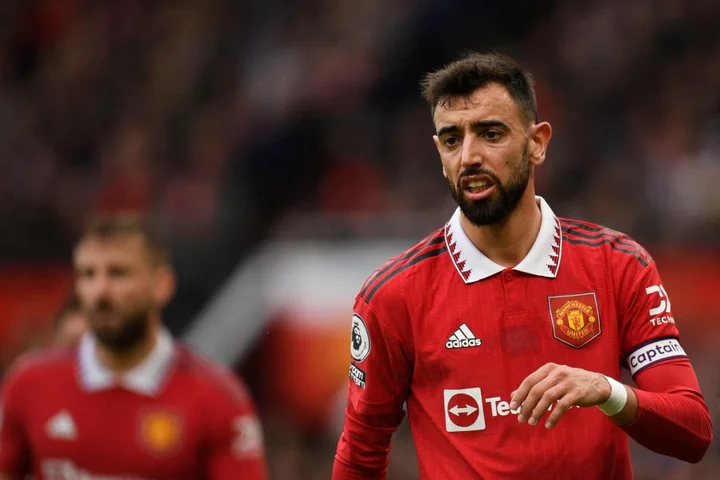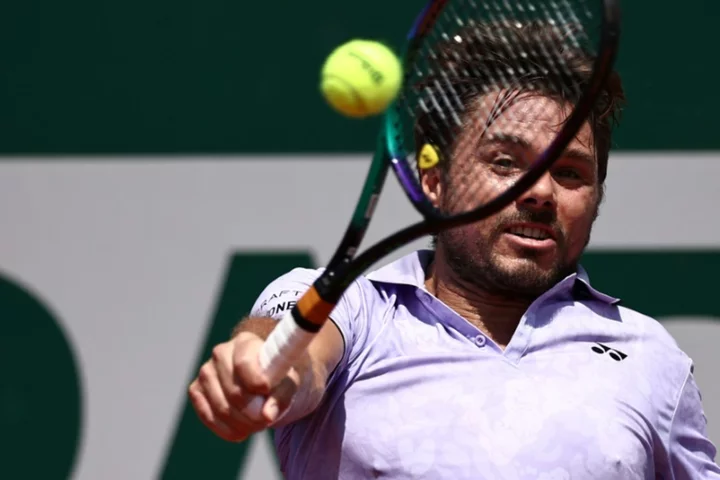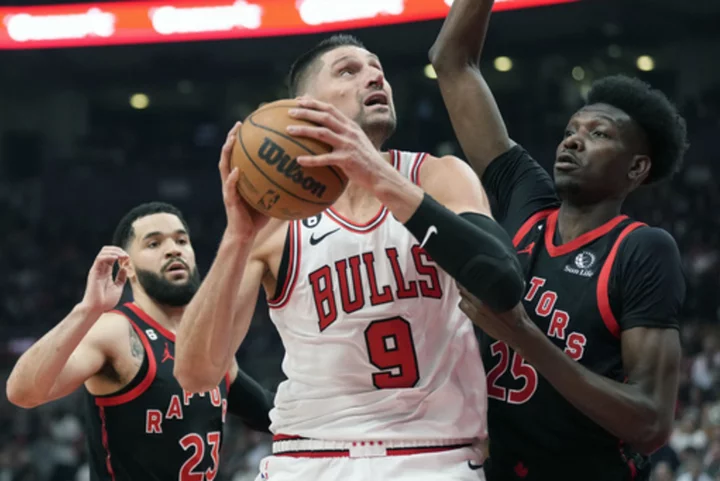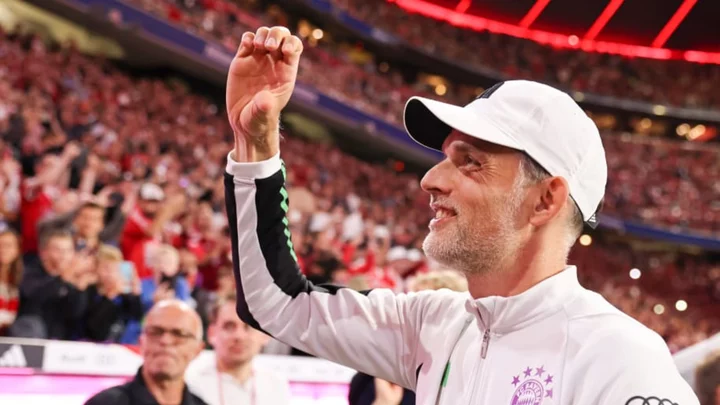The Boston Celtics' season ended in impossibly disappointing fashion. Billed as the favorites in the East and blessed with a relatively easy path to the Finals, Boston sleepwalked past the No. 7 seed Hawks in the first round and barely outlasted the chronically choking Sixers. It wasn't pretty, but by the time the No. 8 seed Heat and the conference finals rolled around, folks expected Boston to get the job done.
Well, we all know that didn't happen. The Heat jumped out to a shocking 3-0 series lead. Jimmy Butler thumped his chest and the Celtics completely froze under pressure. Joe Mazzulla rallied the troops for three straight wins, but the Celtics were blown out on their home court in Game 7. A potentially historic comeback ended with Boston's heads hanging low as Miami went to the Finals for the second time in three years.
An important summer of reflection has followed. Boston parted ways with their defensive soul and locker room ringleader Marcus Smart in a trade for Kristaps Porzingis, who will bomb 3s from the center spot and anchor the defense with his rim protection. Jaylen Brown later signed a historic extension — five years and $303.7 million — that nobody feels good about after his ghastly eight-turnover performance in the Celtics' season-ending loss.
Boston should, on paper, win the Atlantic Division and probably the Eastern Conference. As we know from the last few years, however, that is easier said than done. Jayson Tatum and company have struggled to get over the hump. Banner 18 has proven to be quite elusive.
Any championship run ideally starts with taking care of business in the division. Of course, Boston holds several advantages in that race. Let's break them down on a team-by-team basis.
Celtics' advantage over Raptors: 3-point shooting
The Raptors finished 28th in 3-pointers made last season. The Celtics finished second in the NBA, behind only Golden State. That alone puts Boston on an entirely different plane of existence. You cannot win in the modern NBA without a reliable presence beyond the arc. The Raptors simply don't have the personnel to hit enough 3s on a consistent enough basis.
Toronto made a weak attempt to solve the issue on draft night, selecting Kansas sharpshooter Gradey Dick, but a rookie role player won't solve the issue in year one. The Raptors also exchanged Fred VanVleet, arguably their best volume shooter, for Dennis Schroder on the free agent market. That's not going to help.
New head coach Adrian Griffin hails from Milwaukee, where the 3-ball is an offensive staple. His offensive philosophies could be a welcomed reprieve from the inflexibility of Nick Nurse, but he can't solve a lack of shooters on the roster. If the players can't hit shots, the coach can't make them.
Toronto has the defensive personnel to combat Boston, but the Celtics were the No. 2 seed last season. The Raptors were the No. 10 seed. That gap probably won't close much in 2023-24; expect the Celtics to once again hold a sizable lead on Toronto in the standings.
Celtics' advantage over Nets: Star power
The Brooklyn Nets are a considerably deep team, flushed with talent on the wing and several above-average role players in the Nic Claxton or Spencer Dinwiddie mold. Their sixth-place finish in the East last season is slightly misleading — the Nets climbed up the standings with Kevin Durant and Kyrie Irving on the roster, then went sub-.500 after the trade deadline — but Brooklyn is a real team.
Mikal Bridges emerged as a legitimate focal point following the Durant trade. Formerly thought of as a 3-and-D wing of the highest order, Bridges abandoned his role-player trappings to operate as Brooklyn's de facto star. He averaged 26.1 points and 4.5 rebounds on .475/.376/.894 splits in 27 regular-season games with the Nets.
It's hard to call the Nets star-less as a result, but the Celtics simply obliterate Brooklyn on the top-end talent front. As we saw in the playoffs, there are limitations to Bridges as a No. 1 option. He's not a great passer and the Nets struggled to generate offense outside of Bridges drives or pull-ups once the Sixers first-round series arrived.
In the NBA, a major part of the contending equation is simply having the best players. On the star spectrum, Bridges is good, Tatum is great. The Celtics also have Jaylen Brown, who made second-team All-NBA and was universally considered superior to Bridges right up until Game 7 of the Miami series. The Nets probably have more depth on the roster 6-10, but the Celtics' top two give them a pronounced edge in any regular season or playoff projections.
Tatum averaged 30.1 points, 8.8 rebounds, and 4.6 assists on .466/.350/.854 splits last season. With all due respect to Bridges and the Nets, his presence alone is the differentiator.
Celtics' advantage over Knicks: Offensive diversity
The Celtics' offense proved maddeningly predictable at points during the postseason, but even Joe Mazzulla managed to pull enough tricks out of his sleeve to muster a conference finals appearance and a seven-game run against Miami. The Knicks, like the Nets, probably have more depth in the second unit, but the Celtics' top-end talent easily trumps New York.
With Tom Thibodeau at the reins, the Knicks are managed by a notoriously inflexible offensive coach. New York finished 11th in the NBA in total 3-pointers made last season, but percentage-wise the Knicks were 19th. The offense is centered on two iso-heavy stars — Jalen Brunson and Julius Randle — with a supporting cast made up of subpar shooters and R.J. Barrett, who continues to operate as the third wheel despite growing evidence that he should not.
Both Brunson and Randle suffer from a level of predictability in big moments. Brunson is crafty enough to carve out space anywhere on the court and Randle is a one-man wrecking ball, but neither offers much support away from the ball. The Knicks offense has a tendency to grow stiff in the halfcourt as movement halts and the core pieces go to work.
The Celtics suffer from similar bouts of tunnel vision from their star duo, but Tatum has developed into a reliable playmaker for others and Brown is well-positioned to attack seams in the defense while Tatum draws the bulk of the opposition's focus. Add in the offensive dynamism of Kristaps Porzingis, who can work several different actions on the perimeter and score from all three levels, and Boston's offense is simply at another level.
Al Horford is a useful elbow passing hub. Malcolm Brogdon was a No. 1 option in Indiana. Derrick White was the third-best player on the team in the playoffs. It goes on and on. The Knicks are a playoff-quality opponent, but the Celtics have an unambiguous edge.
Celtics' advantage over 76ers: Frontcourt depth
Forget the Sixers' struggles to defend Jayson Tatum at the point of attack in Game 7. Forget the general malaise that settles over Philly every regular season or the team's worrying history of postseason collapses — many of which happen to involve a victorious Celtics team.
Beyond the simple weight of history, the Celtics hold a clear advantage over Philadelphia in the frontcourt. Not because the Celtics have the best frontcourt player, of course. That title belongs to Joel Embiid. But, because the Celtics hold depth and diversity in the frontcourt, which can be used to neutralize and even exploit the reigning MVP.
The Kristaps Porzingis trade was a fascinating pivot for the Celtics' front office. On the surface, he doesn't feel like a direct response to Embiid's presence. Porzingis is still rail-thin and he doesn't handle Embiid's physicality well in the post. In a straight one-on-one matchup, Embiid wins every time.
But, Porzingis is still a dominant rim protector with a 7-foot-6 wingspan that even Embiid can't ignore. There is also the matter of Embiid's defense, and how Porzinigis' presence will bend the floor. Embiid struggles to guard out in space and the Celtics have given the Sixers trouble with five-out lineups built around Al Horford in the past. Porzingis is a whole new animal, with range way behind the NBA 3-point line and a nifty face-up game to boot.
Boston also has Horford, who still has Embiid's number on the defensive end in big games. Robert Williams is a talented former All-Defensive center who can block shots and play vertically above the rim, giving Embiid defensive headaches with his timely cuts to the rim as he tries to clean up messes made by the Sixers' shoddy perimeter defenders.
Embiid is the best player on the floor when these two teams meet, but the Celtics have a unique frontcourt concoction capable of slowing him down.

